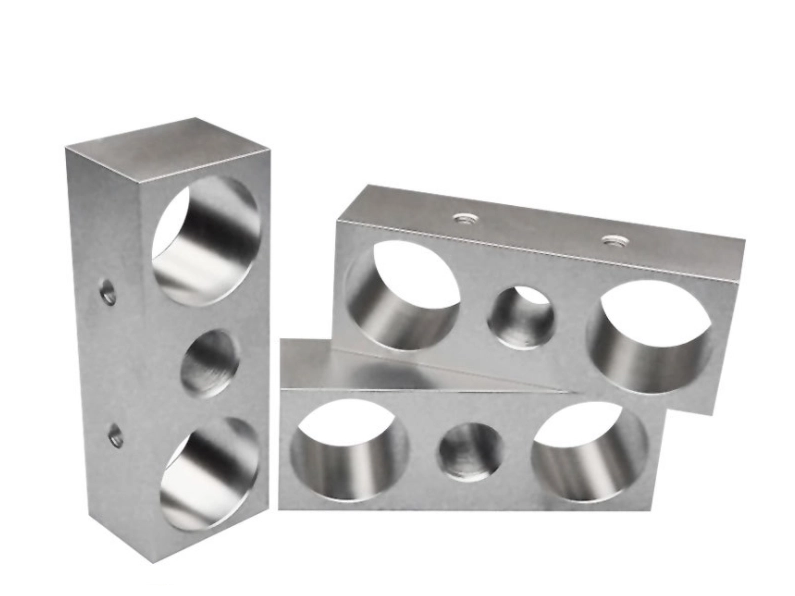
Introduction
The global market for aluminum scrap has witnessed significant fluctuations in recent years, with prices reaching unprecedented lows. This trend has raised concerns among industry stakeholders, economists, and environmentalists alike. Understanding the factors contributing to the decline in aluminum scrap prices is crucial for developing strategies to mitigate adverse effects on the industry and promoting sustainable practices. In this article, we delve into the multifaceted reasons behind the low prices of aluminum scrap, examining economic, environmental, and technological influences. We also explore the role of Aluminum Extrusion in the current market dynamics.
Global Economic Factors Affecting Aluminum Scrap Prices
The price of aluminum scrap is closely tied to the global economic climate. Periods of economic slowdown, such as the one induced by the COVID-19 pandemic, reduce industrial activity and demand for raw materials, including recycled metals. Lower manufacturing output leads to decreased consumption of aluminum products, thereby reducing the need for scrap aluminum. Additionally, trade tensions and tariffs can disrupt the supply chain, affecting both the import and export of aluminum scrap. For instance, changes in trade policies between major economies can lead to oversupply in certain regions, further driving down prices.
Impact of China's Market Dynamics
China plays a pivotal role in the global aluminum market as one of the largest producers and consumers of aluminum products. Recent shifts in China's environmental policies have led to stricter controls on scrap imports. The implementation of the \"National Sword\" policy in 2018 significantly curtailed the import of foreign waste, including aluminum scrap. This caused a surplus in other markets, particularly in Western countries, leading to an oversupply and subsequent price drops. Moreover, China's investment in domestic recycling facilities has reduced its dependence on imported scrap, further influencing global prices.
Technological Advancements in Aluminum Production
Advances in aluminum production technology have increased the efficiency of primary aluminum extraction. Innovations in mining and smelting processes have lowered production costs, making primary aluminum more competitive against recycled aluminum. The decreased cost of new aluminum reduces the incentive for manufacturers to use scrap, contributing to lower scrap prices. Additionally, the development of substitutes and composites in manufacturing diminishes the reliance on traditional aluminum products, affecting the demand for both primary and secondary aluminum.
Role of Aluminum Extrusion Technologies
Aluminum extrusion technologies have revolutionized the way aluminum products are manufactured. The efficiency and cost-effectiveness of modern extrusion methods have made it easier to produce complex profiles with minimal waste. Companies specializing in Aluminum Extrusion can create tailored solutions for various industries, reducing the need for excess material and, consequently, the volume of scrap generated. This reduction in scrap supply can influence the market dynamics, contributing to lower scrap prices due to decreased availability.
Environmental Regulations and Sustainability Efforts
Environmental regulations aimed at reducing carbon emissions and promoting sustainability have a significant impact on the aluminum industry. While recycling aluminum consumes less energy compared to producing primary aluminum, regulatory hurdles and certification requirements can increase the operational costs for recycling facilities. Compliance with environmental standards may require substantial investments in pollution control and waste management systems. These additional costs can make recycled aluminum less economically attractive, contributing to lower scrap prices.
Shift Towards Circular Economy Models
The concept of a circular economy emphasizes the importance of keeping resources in use for as long as possible. In the aluminum industry, this translates to designing products that are easier to recycle and reintroduce into the production cycle. However, the transition to such models requires systemic changes in manufacturing processes and supply chains. As industries adopt more efficient use of materials, the generation of scrap decreases, leading to lower supply in the scrap market. The reduced availability of scrap aluminum can paradoxically result in lower prices if demand does not keep pace.
Market Speculation and Commodity Trading
Commodity markets are subject to speculation, and aluminum scrap is no exception. Traders' perceptions of future market conditions can influence current prices. Expectations of continued low demand, geopolitical uncertainties, or potential policy changes can lead investors to avoid aluminum scrap, depressing prices further. Moreover, the volatility in other commodity markets, such as oil and copper, can have a spillover effect on aluminum scrap prices due to interlinked economic activities and investor behavior.
Currency Exchange Rates and Global Trade
The fluctuation of currency exchange rates affects international trade, including the export and import of aluminum scrap. A stronger domestic currency makes exports more expensive and less competitive in the global market, leading to a buildup of scrap inventory domestically. Conversely, a weaker currency can stimulate exports but may not sufficiently offset low demand worldwide. These exchange rate dynamics play a crucial role in determining the profitability of trading aluminum scrap and influence market prices accordingly.
Impact of Energy Prices on Aluminum Production
Energy costs constitute a significant portion of aluminum production expenses. Lower energy prices reduce the cost of primary aluminum production, making it more competitive against recycled aluminum. The availability of cheap energy sources, such as natural gas and renewable energy, allows producers to increase output without a proportional increase in costs. Consequently, manufacturers may prefer using primary aluminum over scrap, reducing the demand for recycled material and driving down scrap prices.
Investment in Renewable Energy for Aluminum Production
The aluminum industry is progressively investing in renewable energy to power production facilities. Hydroelectric power, in particular, is a popular choice due to its reliability and low operational costs. The integration of renewable energy not only reduces carbon emissions but also stabilizes energy expenses. This shift can lower the overall cost of producing primary aluminum, diminishing the cost advantage traditionally held by recycled aluminum and affecting scrap prices as a result.
Technological Challenges in Recycling Processes
Recycling aluminum scrap involves technical challenges that can impact its economic viability. Contamination of scrap material with other metals or non-metallic substances requires additional processing steps to ensure purity. These processes can be costly and time-consuming. Innovations in sorting and purification technologies are essential to enhance efficiency. However, until such advancements become widespread and cost-effective, the barriers to recycling remain, contributing to lower demand for scrap aluminum and influencing its market price.
Advancements in Automated Sorting Technologies
Automated sorting technologies, such as sensor-based and robotic systems, have shown promise in improving the quality of recycled aluminum. These systems can accurately segregate aluminum alloys, reducing contamination and increasing the value of scrap material. Investments in such technologies can revitalize the recycling industry by making scrap aluminum more competitive. Companies engaged in Aluminum Extrusion stand to benefit from higher-quality recycled inputs, potentially influencing scrap prices positively over time.
Global Supply Chain Disruptions
The aluminum scrap market is susceptible to global supply chain disruptions caused by events such as natural disasters, pandemics, and political instability. These disruptions can lead to logistical challenges, increased transportation costs, and delays. When supply chains are interrupted, manufacturers may resort to local primary aluminum sources rather than relying on imported scrap, reducing demand in the scrap market. The uncertainty associated with supply chain reliability can also lead to strategic stockpiling or divestment, affecting scrap prices.
Strategies for Mitigating Supply Chain Risks
To address supply chain vulnerabilities, companies are exploring strategies such as diversifying supplier bases, investing in local recycling facilities, and adopting just-in-time inventory systems. By enhancing resilience, manufacturers can maintain production levels despite external disruptions. These measures can stabilize demand for aluminum scrap in certain regions but may not sufficiently counteract global downward price trends. Collaboration between recycling firms and Aluminum Extrusion manufacturers can play a role in creating more robust supply chains.
Conclusion
The low prices of aluminum scrap are the result of a complex interplay of economic forces, technological advancements, environmental policies, and market dynamics. Factors such as reduced industrial demand, advancements in primary aluminum production, regulatory challenges, and supply chain disruptions all contribute to the current state of the scrap market. Addressing these issues requires a multifaceted approach involving industry collaboration, technological innovation, and supportive policy frameworks.
Efforts to improve recycling efficiency, invest in renewable energy, and enhance international trade cooperation can help stabilize and potentially increase aluminum scrap prices. Moreover, strengthening the relationship between the recycling sector and Aluminum Extrusion manufacturers can create sustainable demand for scrap materials. By understanding the underlying causes of low scrap prices, stakeholders can develop strategies to promote a more resilient and sustainable aluminum industry.
"}









